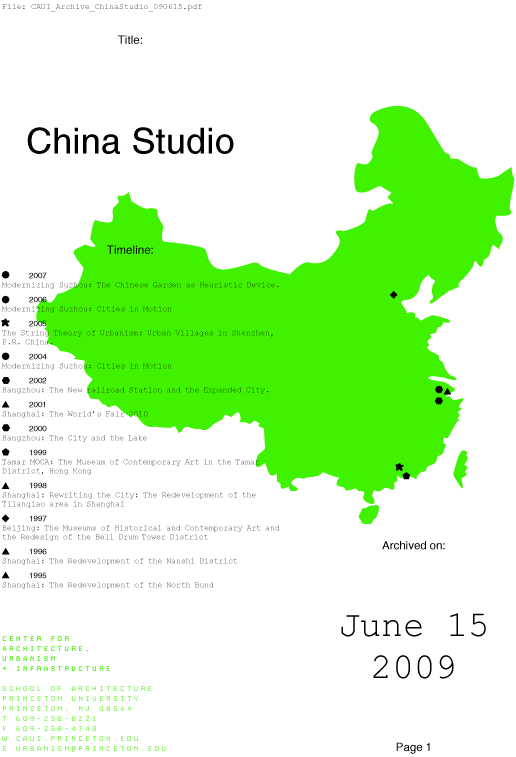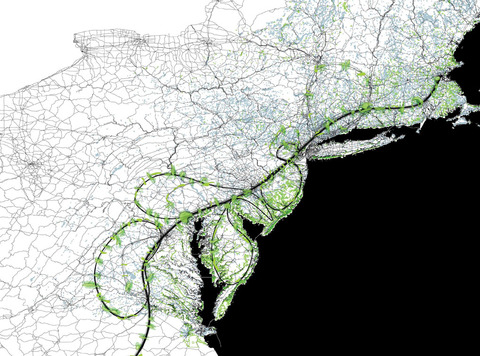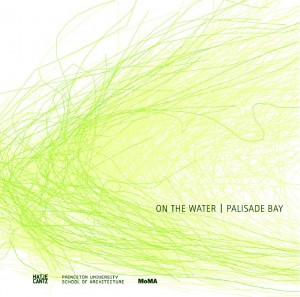On April 9th and 10th, the Center for Architecture, Infrastructure and Urbanism held a workshop that brought together scholars, designers, and policy experts. Organized by Tom Wright (Regional Plan Association and Woodrow Wilson School) and Mario Gandelsonas, the workshop focused on issues of transportation planning facing cities in the near future.
“Hard, Soft, Fast, Slow: Access and Mobility” considered the possibilities opened up by the growing trends of regional commuting and personal digital technology. How do soft systems of communication—smart phones, social media, GPS—change our understanding of existing, hard systems of transportation—roads, rails, airplanes? How can a slow infrastructure respond to the immediacy of tele-media communications and encourage variety, diversity, and new patterns of use that enhance the urban environment? The themes of the workshop were addressed broadly in order to reconsider the effects of an urban monoculture of highways amidst the increasing influence of mobile communications technology.
The Friday evening keynote speech was given by Chris Ward, the Executive Director of the Port Authority of New York and New Jersey, who assessed his department’s challenges with the World Trade Center Site and reflected on the issues surrounding unglamorous problems like the Port Authority Bus Terminal. Ward’s respondents, Prof. Kenneth Jackson (Columbia), Dean Marilyn Taylor (University of Pennsylvania), and Dean Stan Allen, focused respectively on history, planning, and architecture.
In Saturday’s first panel, Tom Wright moderated a discussion on automobile transportation. Aaron Woolf presented his documentary film on Detroit’s auto industry describing the effects of car-focused urban planning. Prof. Owen Gutfreund (Hunter College) offered a historical perspective on highway planning in the U.S., and illustrated the importance of transportation policy in a world that separates work, leisure, and living spaces. Jon Zeitler (Zipcar) discussed Zipcar’s model for auto transport that benefits from existing infrastructure while decreasing auto use. Representing a perspective from architecture, Paul Lewis presented speculative design projects from his office, Lewis Tsurumaki Lewis, that addressed the interaction between cars and cities.
The second panel looked at rail infrastructure and its impacts on urban and regional planning. The panel’s moderator, Petra Todorovich (Regional Plan Association), began the session by presenting the Regional Plan Association’s America 2050 plan. Frederik Pretorius (University of Hong Kong) discussed the special case of Hong Kong’s high urban density and how the government manages rail line expansions. Ariella Masboungi (state architect/planner, France) discussed how sprawling cities in Europe are responding with new modes of transportation like light rail and dedicated bus lines to reinforce density. Wu Jiang (Tongji University, Shanghai) described China’s network of high speed rail lines as a compliment to their highway planning program. Dana Cuff (UCLA cityLAB) explained her idea for post-suburban mobilities in Southern California, and described the challenge creating ‘smart growth’ in post-suburban landscapes. Cuff also suggested that a strong vision for design is what drives good policy, linking two of the main themes of the workshop.
The third panel on digital technologies’ overlaps with transportation, moderated by Mario Gandelsonas, offered new ways to consider transportation questions. Joanna Berzowska (Concordia University, XS Labs) presented her work with new technologies embedded in wearable items that encourage more sensual interaction with the digital. Kristen Purcell (Pew Research Center) described her research on teens’ internet and cell phone use. Axel Kilian reframed how we think about technologies of mobility, from shoes to sedan chairs to eliminating the idea of waiting. Prof. Christine Boyer was skeptical about the newness of new media, and suggested that what might be new was the invisible layer of information that overlays space today.
Overall, the workshop brought together many interesting presentations from different fields that found common points for discussion, and highlighted the challenges facing design and planning disciplines in the future.
*Originally published in from RUMOR 01.02 in Spring 2010 and edited October 10, 2011*
*Sara Stevens is a Ph.D. candidate at Princeton University’s School of Architecture. Her dissertation, Developing Expertise: Architecture, Construction, and Real Estate in the U.S., 1908-1940 studies the real estate development industry’s adoption and deployment of a new kind of expertise that resulted in a qualitatively different set of professional practices while also influencing urban form—bigger, better, faster. Currently she is writing about the professionalization of real estate developers and how they attempted to create a stable image for their industry by combining moral, economic, and legal standardization while befriending colleagues in allied fields like city planning. She holds a Master of Environmental Design from Yale University, where her research looked at familiar, big-box architectural formats of the suburban landscape and the underlying networks of business and finance that produced them. With a professional degree in architecture from Rice University, she has also worked as an architect in Houston and New York.*






